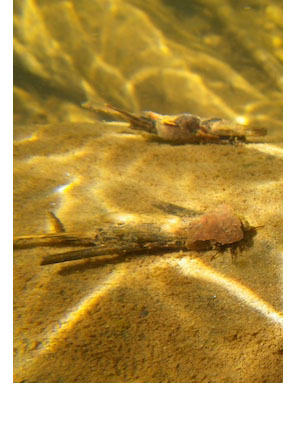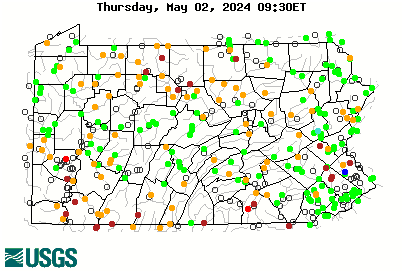As the longer April days warm the waters in the region this provides incentive for the caddisflies (Order Trichoptera) to begin their annual cycle. Not always the preferred insect of the fly anglers, but without a doubt the caddisfly is found in most all the waters in the region.
It is the one insect that has succeeded and thrived in streams that have been decimated with pollution. Streams like the Tulpehocken, Oil Creek and Casselman are are just a few streams known for their abundant caddis fly populations in our region. For many of these streams the caddisfly is so prolific that mayflies are an often after thought for anglers.
The caddisflies behavior is a little less predictable and is certainly one of the reasons it is not as popular for many anglers. Many mayflies can be timed to within a few days and hours. The Green Drakes on Penn's Creek are revered by anglers the same way the "Swallows" of Capistrano are anticipated at the Mission San Juan Capistrano. Caddis flies not so much.
That is not to say great hatches of caddisflies are not enjoyed by anglers and trout, as there can be wonderful evenings and days with them covering a stream. Just as often there can be sporadic emergers happening with without much fanfare.
There are over 1200 species of caddis flies in the country. They range in size and colors covering the gambit of black, green, tan, cream and white bodies. The more popular Grannom hatch do arrive across much of the region at the end of April and are much anticipated by anglers and trout alike.
To get some understanding of their cycle it is as easy to do as by simply lifting a rock the next time out on the water.
Many types of caddis larvae can be found at the bottom of the stream in self-made protected cases or roaming along the bottoms of streams. Some these species create protective cocoons made of small stones or sticks held together with silk like threads. This thread is also used to secure the larvae to the larger rocks or stream bed where they live.
As the caddisflies mature they reach the pupa stage were they hold-up inside their cases and prepare to emerge out as adults above the water. This transformation from water to wing is the most dangerous for all insects. The caddisfly rise from their cases often with the help of a small gas bubble pulling them towards the surface. Once there they emerge with their uniquely folded tent-style of wings they take flight.
The caddis return to lay their eggs either on the surface or by diving to the bottom depending on the species. Like when they emerge, this is the time when they are most susceptible to hungry trout. The cycle of life then returns as these eggs transform into the larvae again.
Like mayflies, caddis flies begin in ernest in April and are big part of many streams. Continued sporadic hatches can be found through the late Fall.
For more on this popular order of insects check out Gary LaFontaine's book
Caddisflies.






